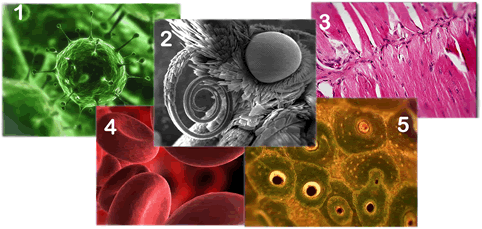
Microscope Slides
Purpose: Now that you have a better understanding of how basic microscopes work, you need to figure out how adjustments are made to create clear images, how the images differ between types of microscopes, and practice focusing various types of microscopes.

Task 1: Before you try using a microscope, you must understand the terminology involved, or you will not know how to make the
appropriate adjustments. Follow the directions for each of the websites below and complete the activities. The information
documented from the first four activities will be saved in a word document and emailed to your teacher. Each of the four activities
should be clearly identified in your document.
- When you open Picture 1 you are going to examine the difference between magnification and resolution. Once you have used
the simulation, you need to compare, in a document, magnification and resolution. - You will use Picture 1 for the second activity, but select the Moth instead. After you have used the simulation, you need to
compare, in the document you started, the appearance differences between the 1600s moth and the 1700s moth and why
those differences exist. - Using Picture 2, select Figure 9-2, Resolving Power, and examine the different ranges between the naked eye, the light
microscope, and the electron microscope. In your document, you need to list the objects that can be seen by the naked eye,
the objects that can be seen using the light microscope, and the objects that can be seen using the electron microscope. - Using Picture 2, select Figure 9-1, A sense of scale between living things and atoms, and examine the Figure. Compare the
measurements in this diagram to Figure 9-2 that you used in the prior activity. In your document, identify how many of the
pictures in Figure 9-1 can be seen with the naked eye, how many can be seen using the light microscope, and how many can be
seen using the electron microscope.
Task 2: Now that you are familiar with the adjustments you can make to a microscope and the range of sizes able to be seen by a
light microscope and an electron microscope, you are going to practice using and adjusting different types of microscopes. You will be
creating a document and using the screen capture feature to record activities one and three in order to submit your work to the
teacher.
- On the site found in Picture 3 you will learn how to use a compound microscope. You will need to take the tour first to
understand the adjustment of each mechanism. After you get each of the four slides into focus, you will use the screen capture
feature on your computer to take a picture of each slide and insert the pictures into a document that will be saved and
submitted to your teacher. - Picture 4 will take you to an interactive electron microscope site. You will need to drag each specimen to the microscope for
viewing and then drag it to the appropriate location. No documentation is necessary for this activity. - Other types of microscopes have capabilities far different than those of the light and electron microscopes. Picture 5 will take
you to a site where you will select each of the four types of microscopes shown across the bottom of the screen. After you
select a type of microscope, select Try the Simulator to begin the simulator for that microscope. For each of the four types of
microscopes you will make the necessary adjustments to create a quality image. You will use the screen capture feature on
your computer to take a picture of your final images for each slide and insert the pictures into the same document you created
for the first activity in task 2.
Community: On the class wiki you will find a link to the 2009 National Geographic winners for tiny microscopic life pictures. Your job
is to go to that link and select one of the images from the first page. You will determine what type of microscope you feel was used to
take that picture. Your posting will consist of the type of microscope and what clues made you believe that type of microscope was
used. You will also respond to two different classmates’ postings and agree or disagree with their comment and explain why you feel
the way you do. You must reply to students that did not choose the same image as you.
.http://news.nationalgeographic.com/news/2009/11/photogalleries/best-tiny-microscopic-life-pictures/
Assessment: Your assessment for this lesson will be based on the submission of the documents for Task 1, Task 2, and your
response and reply on the class wiki.
Please contact us with any questions about our project, materials, or for permission to use any portion of the project.